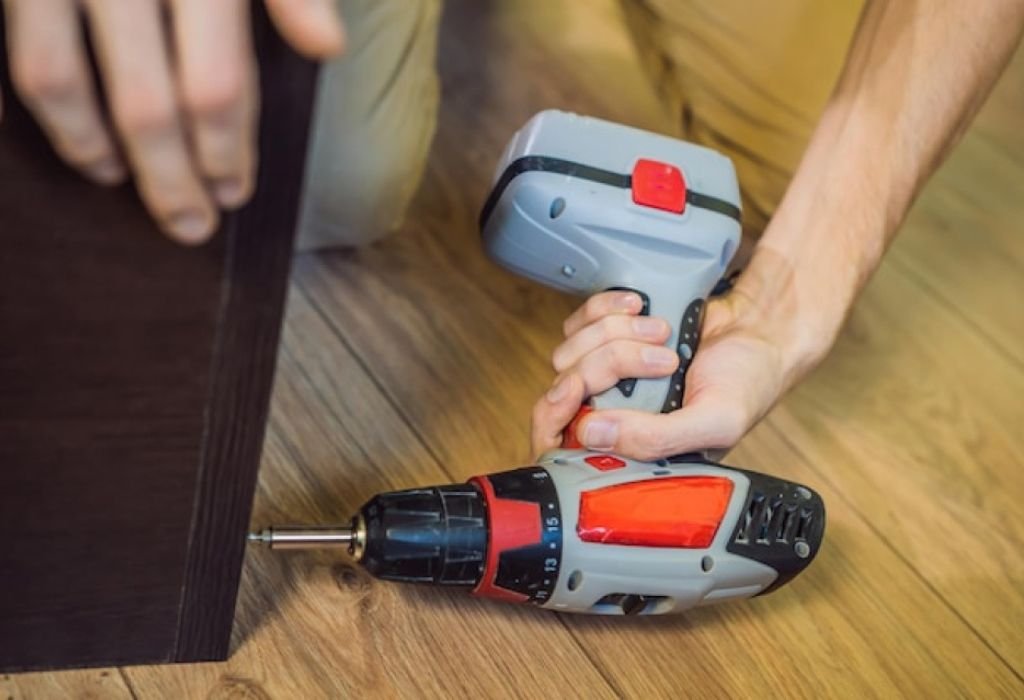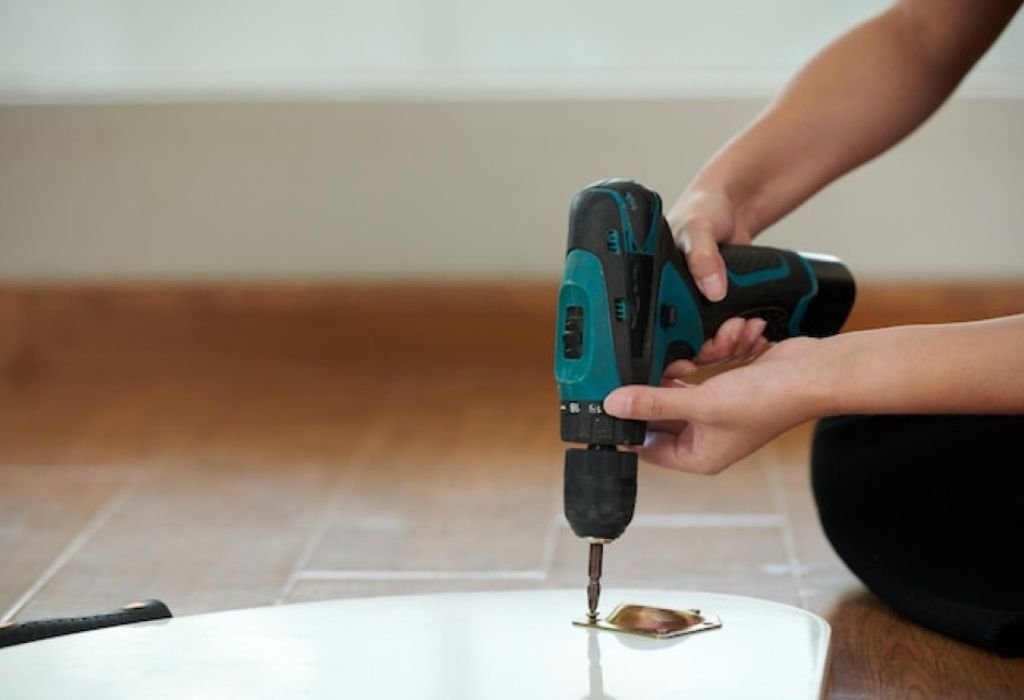A homeowner walks into a hardware store and stares at a wall of impact drivers in different sizes. The excitement of buying a new tool quickly turns into confusion.
The question rises immediately: what size impact driver do I need for my projects. Picking the wrong size means stripped screws, wasted money, and endless frustration.
Impact drivers are powerful tools designed for driving screws and bolts with torque that regular drills cannot provide. But not all impact drivers are built the same.
The size of an impact driver determines how much torque it delivers and what kind of tasks it can handle. Choosing the right size ensures efficiency and long tool life.
For light tasks like furniture assembly or hanging shelves, a smaller 1/4-inch impact driver might be the perfect fit. For heavy-duty jobs like automotive repairs or construction, a 1/2-inch driver is the right choice.
The cordless power tools market makes up nearly 59% of all power tool sales, showing their dominance in both DIY and professional settings (Statista). This proves how many buyers face the same challenge of selecting the right size.
In addition, DIY home improvement spending in the U.S. exceeded $500 billion in 2022, highlighting the massive demand for reliable and versatile tools (Harvard JCHS). With that level of investment, making the right choice is crucial.
This guide explains what size impact driver is best for DIYers, contractors, and automotive work. By the end, you’ll know exactly which size matches your needs without wasting time or money.
What Does “Size” Mean in an Impact Driver?

Size in an impact driver refers to two main things: the chuck size and the torque rating. The chuck is the part that holds the bit, while torque measures turning force.
Most impact drivers come in 1/4-inch, 3/8-inch, and 1/2-inch chuck sizes. Torque ratings range from about 800 in-lbs to over 2500 in-lbs depending on the model.
What does size mean in impact drivers?
It refers to chuck size and torque power.
Does chuck size matter?
Yes, it determines what bits can be used.
Does torque affect performance?
Yes, it decides how powerful the tool is.
Are compact drivers weaker?
Generally yes, but they’re easier to use.
Common Impact Driver Sizes Explained
A 1/4-inch impact driver is the most common size. It works well for light and medium-duty tasks like furniture assembly, cabinetry, and decking.
A 3/8-inch model is versatile, bridging the gap between light-duty and heavy-duty jobs. A 1/2-inch driver is built for automotive and construction tasks where maximum torque is needed.
What is a 1/4-inch impact driver used for?
Light to medium fastening.
Is a 3/8-inch impact driver versatile?
Yes, it handles a wider range.
What about a 1/2-inch model?
It’s best for heavy-duty tasks.
Can one size handle all jobs?
No, choose based on tasks.
How Torque Affects What Size You Need
Torque ratings are just as important as chuck size. Lower torque (800–1500 in-lbs) is fine for small household projects.
Medium torque (1500–2000 in-lbs) suits decking, framing, and woodworking. High torque (2000+ in-lbs) is required for automotive and large construction projects.
What torque is enough for home use?
800–1500 in-lbs is sufficient.
Do I need high torque for wood projects?
No, medium torque is enough.
What about automotive work?
2000+ in-lbs is recommended.
Is more torque always better?
No, it can overtighten screws.
Choosing the Right Size for DIY Projects
For small projects like hanging shelves, a 1/4-inch impact driver is more than enough. It’s lightweight, compact, and easy to control.
For building decks, fences, or sheds, a 3/8-inch impact driver is ideal. It balances power with versatility, making it suitable for medium-duty work.
What size works for furniture?
A 1/4-inch driver.
What about decking or fencing?
A 3/8-inch driver is best.
Do I need a 1/2-inch for DIY?
Not unless working on cars.
Can a 1/4-inch do everything?
No, it struggles with heavy jobs.
Choosing the Right Size for Professionals
Contractors often choose a 3/8-inch driver for everyday versatility. It has enough torque for most construction and renovation work.
Automotive mechanics prefer 1/2-inch drivers for lug nuts and bolts. Electricians and carpenters usually go with 1/4-inch models because they’re portable and fit tight spaces.
What size do contractors prefer?
3/8-inch for versatility.
Do auto mechanics need 1/2-inch?
Yes, for heavy bolts.
What about electricians?
They prefer compact 1/4-inch models.
Do pros use multiple drivers?
Yes, many own more than one.
Brushless vs Brushed Motors and Size Choice
Brushless impact drivers deliver more power in smaller sizes. They are efficient, durable, and better for frequent use.
Brushed models are cheaper but bulkier and less powerful. Professionals almost always choose brushless, while DIYers may find brushed models affordable.
Does brushless make a difference?
Yes, it improves efficiency.
Are brushed models weaker?
Yes, and less durable.
Is brushless worth the cost?
Yes, for regular use.
Do brushless tools last longer?
Yes, with less wear.
Corded vs Cordless Impact Drivers
Cordless impact drivers dominate today’s market. They run on lithium-ion batteries and provide portability for outdoor projects.
Corded impact drivers are rare but still exist for unlimited runtime. Battery size, typically 18V or 20V, impacts both power and endurance.
Are cordless impact drivers better?
Yes, for portability.
Does battery size matter?
Yes, larger batteries last longer.
Do corded drivers still exist?
Yes, but they are uncommon.
Is 20V stronger than 18V?
Practically, they’re the same.
Accessories and Bit Sizes to Match Driver Size

A 1/4-inch driver uses hex-shank bits designed for impact use. These bits resist slipping and are made to handle torque.
3/8 and 1/2-inch drivers can use socket adapters for bolts and nuts. Magnetic bit holders and impact-rated screwdriver sets add speed and convenience.
What bits fit 1/4-inch drivers?
Hex-shank screwdriver bits.
Can 3/8-inch use sockets?
Yes, with adapters.
Are special bits needed?
Yes, impact-rated ones.
Do accessories improve efficiency?
Yes, they save time.
Market Trends in Impact Drivers
Compact 1/4-inch brushless drivers are the fastest-growing segment. They offer enough torque for most jobs in a lightweight body.
1/2-inch impact drivers remain popular in automotive and heavy construction fields. Combo kits pairing drills and impact drivers are also widely sold.
Are compact drivers popular?
Yes, especially among DIYers.
Is demand for 1/2-inch rising?
Yes, in automotive sectors.
Are combo kits worth it?
Yes, they provide versatility.
Are cordless models dominant?
Yes, they lead the market.
Conclusion
The answer to what size impact driver do I need depends on your projects. For most homeowners, a 1/4-inch model handles everyday fastening tasks.
For construction and medium-duty work, a 3/8-inch impact driver is the best balance of power and versatility. For automotive or heavy construction, a 1/2-inch model is essential.
Choosing the right size ensures efficiency, safety, and tool longevity. With the proper impact driver, you can tackle any project with confidence and ease.

I’m John F. Nicholas, the founder, lead writer, and drill enthusiast behind 101drill.com. With years of hands-on experience in power tools and DIY projects, I created this platform to share practical knowledge, expert tips, and real-world insights to help others master the art of drilling.
